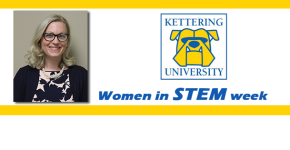 Engineering innovations are going to keep babies warm – thus saving their young lives.
Engineering innovations are going to keep babies warm – thus saving their young lives.
Dr. Gillian Ryan, a Kettering University assistant professor of physics, is developing technology improvements for a startup that makes non-electric incubating blankets to help fight infant mortality in the developing world/areas without access to electricity
Gillian Ryan is an assistant professor of physics at Kettering University where she heads up The Ryan Lab. Her research specialties include Biological Physics, Mathematical Modelling, Computer Simulations, Image Analysis, Nucleation Theory, and Phase Transitions.
Electric Blanket Tech

Infant mortality is a massive problem around the world, particularly in developing countries. High infant mortality rates are exasperated by the lack of electricity in rural villages, which can create difficult environments for newborn children and infants.
We are partnering with an Ann Arbor-based startup that is attempting to provide non-electric incubating blankets to villages in India that lack electricity.
The heated blanket is a more sophisticated version of pocket warmers that can be easily found at local pharmacies and placed in shoes and gloves for added warmth. The company has emulated that science to create a prototype blanket that can maintain warmth for approximately five hours.
Our research team is attempting to cap the maximum temperature the blanket will attain and extend the duration of warmth beyond five hours.
The active component of the blanket is a polymer pouch that is first boiled in water to melt the pouch’s contents. Once boiled, the pouch is fitted into a blanket sleeve. The pouch cools to room temperature over time, however its contents remain in a liquid state. A second round of heat release may be activated by snapping a spring which initiates a phase transformation of the pouch’s contents from liquid to solid crystal. This crystallization process releases heat, which warms the blanket a second time.
We want to slow down the process in which this pack solidifies so that it releases heat over a longer period of time. Ideally heat release would last over eight hours, which would allow caregivers to provide infants a full night of warmth without interruption.
We are exploring possibilities to slow down crystallization by studying the crystal growth patterns and attempting to modify growth by introducing additives such as nanoparticles to the fluid
The end result will be extended warmth for newborns and infants in developing countries and – most importantly – more lives saved.

